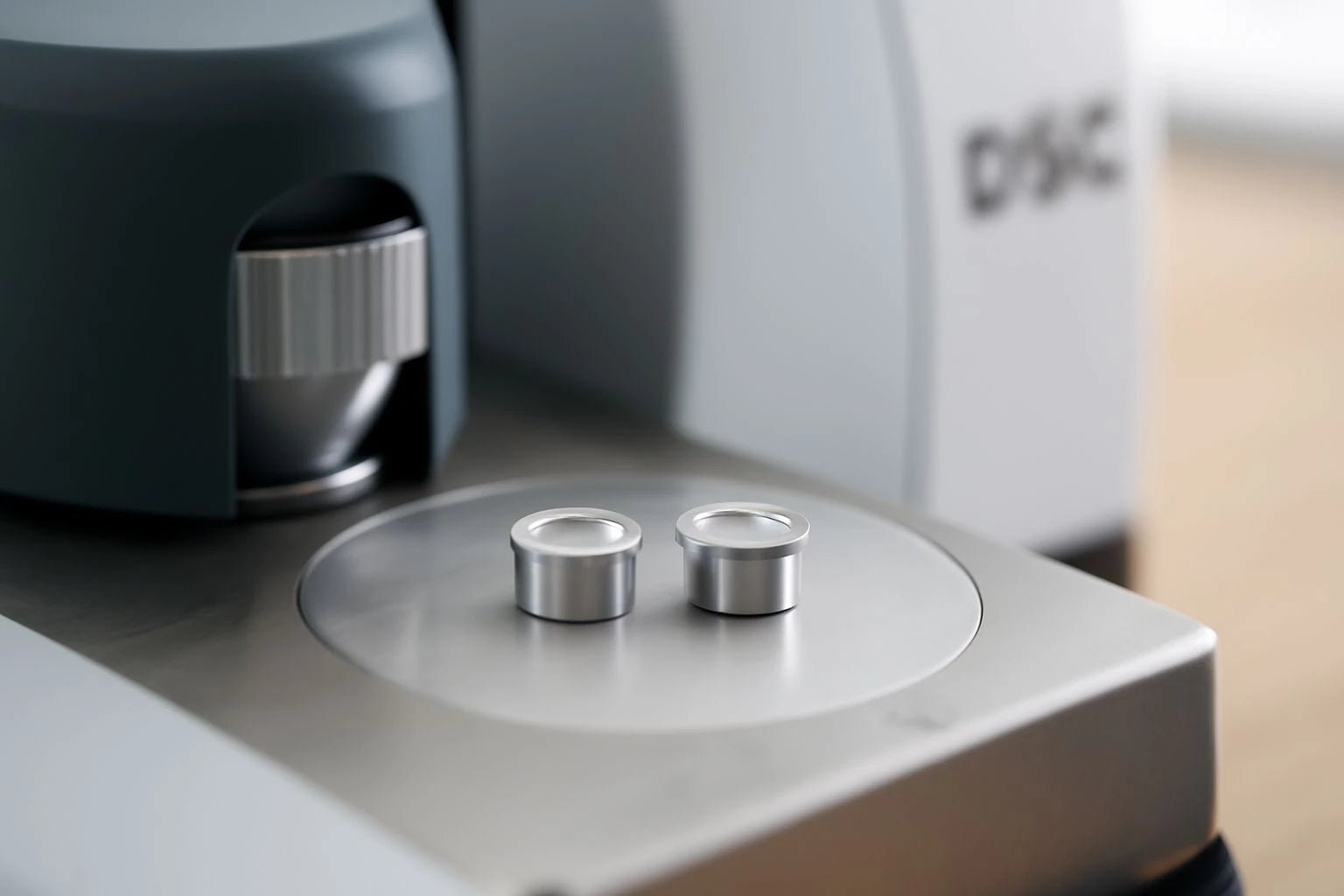Choosing the right DSC sample pan is crucial for accurate thermal analysis. Incompatible or poorly chosen pans can lead to unreliable results. Learn how to solve common problems in this guide.
One of the most common issues in DSC (Differential Scanning Calorimetry) analysis is pan incompatibility. To avoid inaccurate or inconsistent results, it's essential to use the right sample pan that matches your equipment's requirements. Always refer to the manufacturer's specifications to ensure compatibility.

If your DSC sample pan doesn't fit your equipment, it could cause measurement errors or even damage your device. Ensure you're using the right material and size for your analysis. Read on to learn how to resolve this issue efficiently.
What to Do if Your DSC Sample Pan is Incompatible with Your Equipment?
Encountering issues with DSC sample pan compatibility can be frustrating. You might experience poor thermal conductivity, inaccurate readings, or even damage to your equipment. What should you do?
The first step is to check the manufacturer's compatibility guidelines. This will ensure you're selecting a sample pan that fits your specific DSC model and material requirements. If your sample pan doesn't meet these standards, consider switching to a compatible model or material.
Understanding the exact dimensions and temperature range for your DSC sample pan is crucial. Use the table below to compare the key factors that influence compatibility.
| Factor | Description | Impact of Incompatibility |
|---|---|---|
| Material | Sample pans can be made from various materials like platinum, ceramic, and aluminum. | Using the wrong material may cause sample contamination or interfere with thermal analysis. Learn more about thermal conductivity. |
| Temperature Range | Different pans are rated for specific temperature ranges, e.g., aluminum for up to 600°C, platinum for higher ranges. | Incompatible temperature ranges could lead to pan deformation or incorrect results. Learn more about temperature. |
| Size | Ensure the sample pan fits the DSC's sample holder properly. Common sizes include 5mm, 7mm, and 8.5mm diameters. | Incorrect sizes could cause inconsistent heating or poor sample containment. Learn more about heat transfer. |
By understanding these factors, you can select the right pan for your DSC system, ensuring more accurate results and extending the life of your equipment.
How to Prevent Sample Pan Contamination During Thermal Analysis?
Contamination is a serious issue when performing DSC analysis. Foreign particles can significantly alter results, leading to inaccurate conclusions. What measures can you take to prevent contamination?
To prevent contamination, ensure that your DSC sample pans are thoroughly cleaned before use. Avoid using pans that are exposed to oils, moisture, or other chemicals that may affect thermal readings. Always handle pans with clean, dry hands and store them in a contamination-free environment.
In addition, it's important to ensure that the sample pan is free from any residue or oxidation that may have formed during previous uses. Cleaning methods vary depending on the material, so always follow the manufacturer's cleaning guidelines for the best results. Learn more about contamination in chemical analysis.
What to Consider When Your DSC Sample Pan Affects Analysis Results?
Your DSC sample pan's characteristics play a significant role in the quality of your results. If your sample pan is affecting analysis results, what should you do?
First, review the material and size of your pan. A mismatch can alter the heat flow during thermal analysis, leading to false readings. Additionally, consider the sample pan's surface treatment, as rough or unpolished surfaces can affect heat transfer, causing inaccurate results.
If you find that the sample pan material isn't suitable for your analysis, consider switching to one with better thermal properties, such as platinum or high-quality ceramics, to ensure more accurate measurements. Pay attention to the size as well, as incorrect dimensions can lead to sample unevenness, further affecting the analysis. Learn more about surface treatment.
How to Avoid Errors in DSC Measurements Due to Sample Pan Choice?
Choosing the wrong sample pan can lead to serious errors in DSC measurements. How can you avoid these errors?
Start by understanding your sample’s thermal properties and selecting a sample pan that matches these properties. If you're unsure about which pan to use, check for recommendations from your DSC equipment manufacturer. Ensure that the pan you choose will not affect your sample's thermal behavior.
Another critical factor is pan cleanliness. Any impurities on the surface of the pan can introduce errors into the thermal readings, leading to skewed results. Cleanliness and material compatibility are vital to accurate and reproducible DSC measurements. Learn more about cleanliness in analysis.
Conclusion
Choosing the right DSC sample pan is crucial for accurate thermal analysis. By following the guidelines for compatibility, preventing contamination, and choosing the correct material and size, you can avoid common issues and ensure more reliable results.


Leave a comment